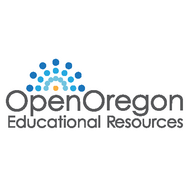
(View Complete Item Description)
This textbook is an adaptation of the Saylor Introduction to Chemistry book customized for CH 104 at Central Oregon Community College. Low-cost print available: http://www.lulu.com/shop/forrest-towne/introduction-to-chemistry/paperback/product-24034383.html
Upon completing this course students will:
Interpret the periodic table to describe elements of atomic structure for the elements and to make predictions about properties based on the position of elements on the table.
Apply atomic theory in describing atomic structure, making predictions about bonding and compound formation, and interpreting chemical reactions.
Construct and interpret Lewis structures as models for ionic and covalent compounds.
Describe ionic and covalent bonding and distinguish between the two, including descriptions of substances of each type at the observable scale.
Solve problems using dimensional analysis involving chemical substances and reactions, drawing on understanding of the mole concept, formula masses and reaction stoichiometry.
Read, write, and interpret balanced chemical equations, using proper equation syntax and standard symbolism to link such descriptions to phenomena that occur at the observable scale.
Interpret and carry out a set of written experimental instructions and then to convey the experimental results in a laboratory report.
Apply kinetic-molecular theory to describe solids, liquids, and gases.
Recognize acids and describe acidity according to the Bronsted-Lowry definition.
Use scientific (inductive) reasoning to draw appropriate conclusions from data sets or theoretical models. Characterize arguments as scientific, or not scientific.
Make measurements and operate with numbers properly to convey appropriate levels of certainty when drawing conclusions from experimental data. Identify patterns in data by graphical means.
Material Type:
Textbook
Author:
Forrest Towne




















